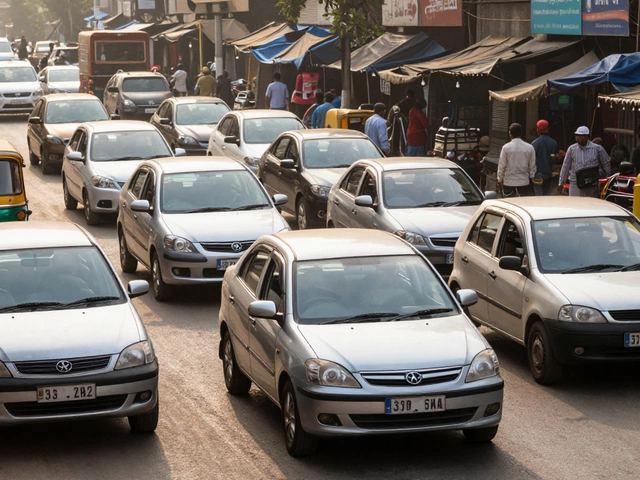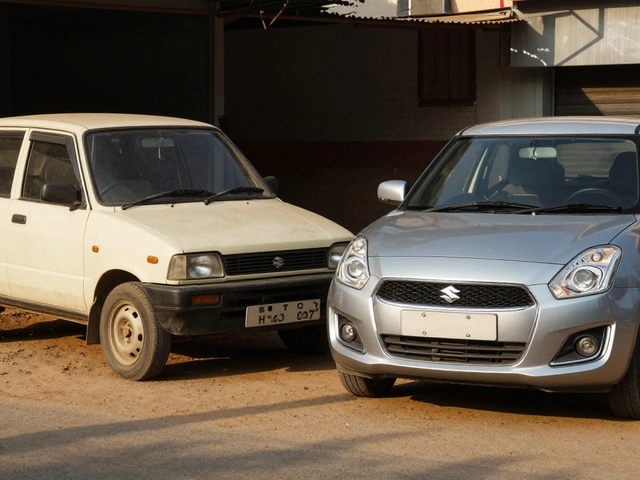How to Import a Car from the USA to India in 2025
Thinking about bringing a US‑made car to India? You’re not alone. Many buyers love the design, performance, or price of American models, but the process can feel confusing. This guide breaks down every step, from choosing the right vehicle to landing it on Indian roads, so you know exactly what to expect.
Step 1: Choose the Right Car and Check Eligibility
First, pick a car that’s actually allowed in India. The Ministry of Road Transport lists vehicles that meet emission and safety standards. Most modern sedans and SUVs pass, but anything with a left‑hand drive or a non‑compliant engine may be blocked. Use the CAR‑REPORT portal or ask your dealer to confirm the model’s eligibility before you spend time on paperwork.
Next, decide whether you want a brand‑new vehicle or a used one. New cars usually have lower import duty rates, but used cars can be cheaper if you find a good deal. Remember, used cars older than three years face higher taxes and stricter emissions checks.
Step 2: Calculate All Costs Up Front
The biggest surprise for many importers is the total cost. Here’s a quick rundown:
- Customs duty: 100 % of the car’s CIF (cost, insurance, freight) value for new cars, 125 % for used cars older than three years.
- GST: 28 % on the total of car price plus customs duty.
- Additional levies: Road tax (varies by state), registration fee, and a handling charge (usually around ₹5,000‑₹10,000).
- Shipping: Container shipping from US ports to Indian ports runs ₹80,000‑₹150,000 depending on volume and destination.
- Insurance: Marine insurance for the shipment, typically 0.5‑1 % of the car’s value.
Use an online calculator or ask a customs broker to plug in your exact numbers. Adding everything together gives you a realistic budget before you sign any purchase agreement.
Once you have the cost estimate, you’ll need to arrange payment. Most US dealers prefer a wire transfer, but some accept escrow services that protect both buyer and seller until the car clears customs.
Step 3: Handle Documentation and Shipping
Paperwork is the backbone of the import process. The essential documents include:
- Bill of Lading (provided by the shipping line)
- Commercial Invoice from the seller
- Certificate of Origin (shows the car was built in the USA)
- Export Declaration from the US customs
- Insurance Certificate
- Form 45 (used‑car import form) if the vehicle is pre‑owned
Hire a reliable freight forwarder who can take care of the booking, container loading, and customs clearance on the US side. They’ll also coordinate with an Indian customs broker to submit the paperwork when the ship arrives at Mumbai, Chennai, or any other Indian port.
When the car lands, the broker will pay the customs duty and GST on your behalf (you’ll reimburse them). After the payment, the vehicle is released for inland transport.
Step 4: Register the Car in India
After the car clears customs, you must register it with the Regional Transport Office (RTO) in the state where you’ll keep it. Bring the following:
- Original customs clearance certificate
- Proof of payment of duties and taxes
- Insurance policy valid in India
- Form 20 (application for registration)
- Pollution Under Control (PUC) certificate
Registration fees differ by state, but expect a few thousand rupees. Once the RTO issues a number plate, you can legally drive the car on Indian roads.
Remember to get a local service center that can handle US models. Some major cities have authorized dealers for brands like Ford, Chevrolet, or Jeep, which can source spare parts and perform warranty work.
Importing a car from the USA is doable if you plan ahead, know the costs, and follow the paperwork checklist. With the right broker and a clear budget, you’ll have your dream American ride on Indian streets without nasty surprises.
How to Transfer Your Car from USA to India: Step-by-Step Guide
Curious about bringing your car from the US to India? Here’s a straight-talking guide on shipping, import rules, costs, and paperwork for making the move easy.
Read More




